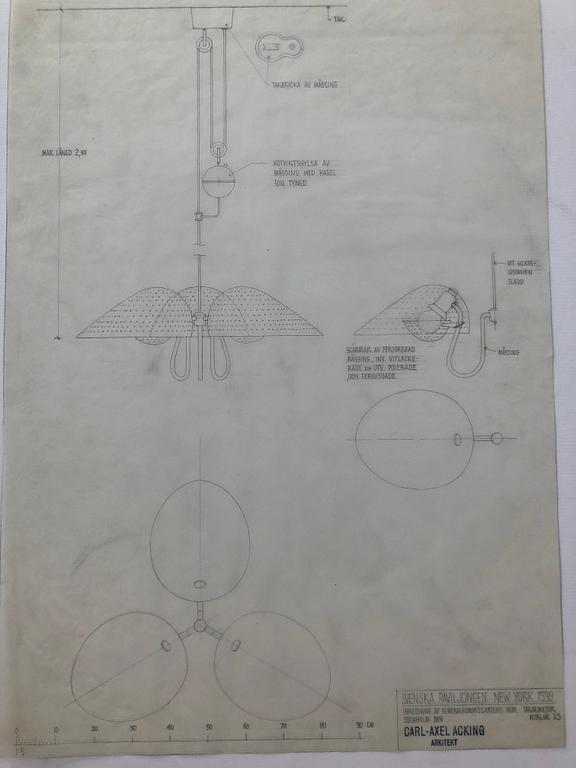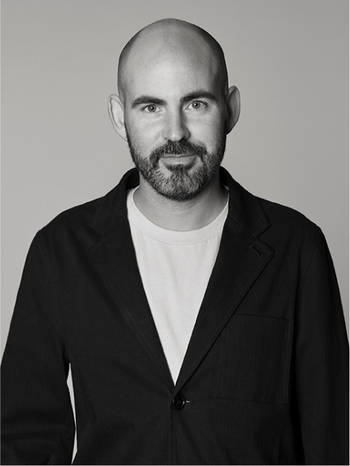Carl-Axel Acking
a ceiling lamp, model 958, Bröderna Malmströms Metallvarufabrik, Sweden 1940s.
Three screens in perforated brass with underlying diffusers, height adjustable function with brass weights, height of the lamp ca 42 cm, adjustable ca 100-150 cm, diameter ca 70 cm.
Wear, marks, glue ressidue. Function not guaranteed.
Literature
Drawing from Carl Axel Acking's archive at ArkDes.
The model depicted in Bröderna Malmströms Metallvarufabrik, catalog no. 17, 1939.
More information
Model number 958 was launched in the Swedish pavilion at the World Fair in New York on April 30, 1939. The first specimen hung in Commissioner General Folke Bernadotte's office as part of a series of lighting fixtures and furniture designed by Carl-Axel Acking. The work on the artistic design of the entire Swedish pavilion was led by the building council and architect Sven Markelius. The furnishings, fixtures, and textiles from Nordiska Kompaniets textile chamber were also available for the curious who did not have the opportunity to travel by boat to New York, to see in Åtvidabergs Industrier's exhibition area on Hamngatan in Stockholm for a couple of days.
Designer
Carl-Axel Acking is considered one of the most influential Swedish architects and designers during the 1930s-50s. Acking's furniture and lighting fixtures have been produced by, among others, Svenska Möbelfabrikerna in Bodafors, the Kooperativa Förbundet in Stockholm and Bröderna Malmströms Metallvarufabrik in Malmö, as well as by several cabinetmakers for the Stockholm Crafts Association. He also had an important role in Nordiska Kompaniet's furniture department during the 1940-50s where he designed the iconic "Trienna" chair. Acking had an early breakthrough at the World Exhibition in Paris in 1937, and had many prestigious assignments in the following years. Acking was one of the main architects behind the H55 exhibition in Helsingborg in 1955 and held significant positions within the Swedish world of architecture and design.
Read more






























































































